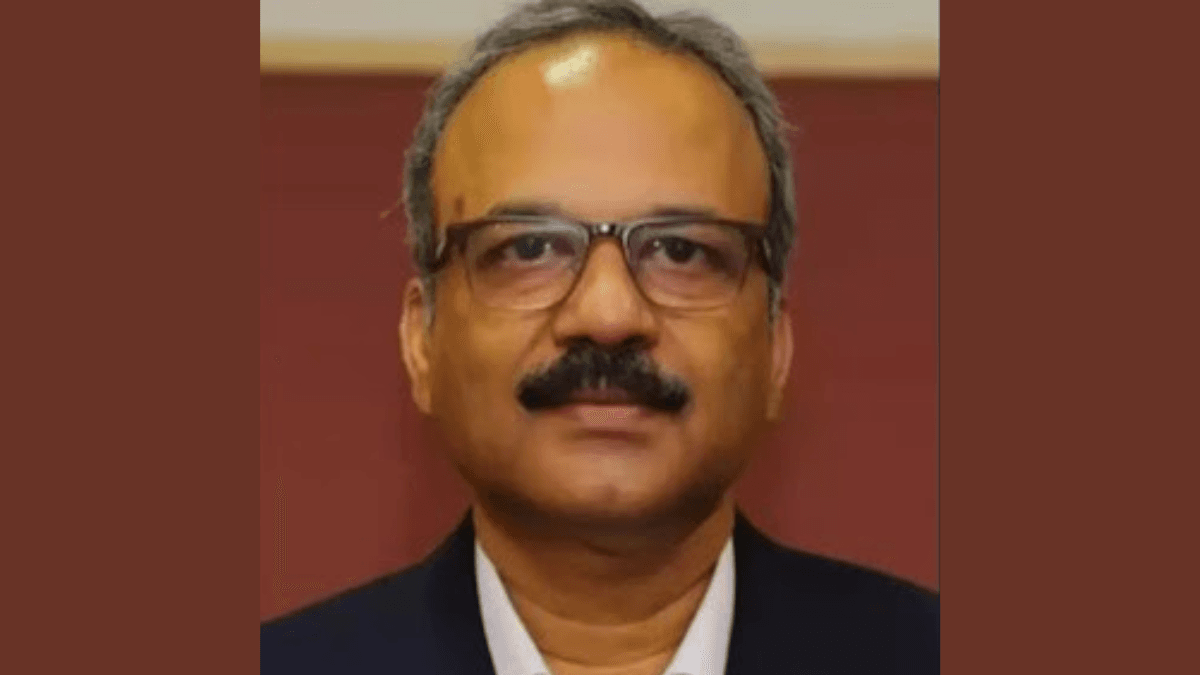From stricter standards to cutting-edge therapies, DCGI Dr. Rajeev Singh Raghuvanshi outlines how India is repositioning itself as a global pharmaceutical force.

Dr. Rajeev Singh Raghuvanshi Drugs Controller General of India (Source: linkedin)
India has long been called the “pharmacy of the world”, a reputation built on low-cost, high-volume generics. But that label no longer captures the country’s evolving ambition. If you ask Dr. Rajeev Singh Raghuvanshi, Drugs Controller General of India, the global pharmaceutical narrative is shifting—and India wants to be seen not just as a supplier of affordable medicines, but as a trusted partner in innovation, quality, and regulatory leadership.
“People wait for Indian supplies. They wait for Indian engagement,” Raghuvanshi said, speaking at the FE Healthcare Summit 2025. “India is producing medicines for the world. But this is no longer just about trade—it’s about global trust.”
India’s pharmaceutical industry currently stands at $60 billion, with exports and domestic trade split almost evenly. But the future growth lies beyond borders. By 2030, exports are projected to touch $130 billion, nearly doubling in less than a decade. That growth isn’t just aspirational—it’s strategic.
Consider this: India supplies 70% of the world’s vaccines, 40% of generic drugs used in the U.S., and 25% of all medicines consumed in the UK. Over 200 countries import Indian medicines. And in many low- and middle-income nations, 90% of all drugs come from India.
“We are not just filling gaps. We are forming the backbone of the global drug supply chain,” he said.
But quantity isn’t enough anymore. What Raghuvanshi stressed was quality recognition, and India is making quiet, significant strides on that front.
The Indian Pharmacopoeia (IP), which sets the country’s drug standards, is now recognised by 15 countries, a jump from just three recognitions four years ago. “Last week, we signed the 15th agreement, which was with Cuba,” he said. “That’s a big deal. We are now listed alongside USP, BP, and European Pharmacopoeia.”
India also became the fourth permanent member of the Pharmaceutical Discussion Group (PDG)—a body that includes the U.S., European, and Japanese pharmacopoeias. The group’s mandate? Harmonise global quality standards for pharmaceuticals. “Being invited as a full member is a strong vote of confidence. It puts India on equal footing in global standard-setting conversations,” he said.
Another milestone came when India’s vaccine regulatory system received a Maturity Level 3 rating from the World Health Organization—a designation that signifies a robust and functional system. “This rating reduces scrutiny for our vaccine exports, which is crucial for market access,” he explained.
Much of this progress, he noted, has come through regulatory reforms. Nearly 99% of India's drug regulatory processes are now digital—from licensing to approvals—making it easier for both regulators and manufacturers to operate with transparency and speed.
“We have moved beyond physical file systems. It’s a complete shift—and it’s working,” he said.
One of the biggest structural changes involves the enforcement of WHO-GMP-equivalent standards across India’s manufacturing sector. Large pharmaceutical firms (those with over Rs 250 crore turnover) are already compliant; smaller firms have until December 2025 to catch up.
“This move has global implications,” Raghuvanshi said. “Buyers, both international and domestic, now require WHO-GMP or revised-compliant certification to even consider tender participation.”
The intent is clear: raise India’s manufacturing credibility to global levels and weed out non-compliant producers.
Raghuvanshi also touched on a development that could redefine how the world views Indian pharma: CAR-T cell therapy. A form of personalised immunotherapy for cancer, CAR-T treatments have historically been prohibitively expensive—often costing upwards of Rs 3 crore abroad. But India’s regulator approved two homegrown CAR-T products recently, one of which costs just Rs 30–40 lakh.
“It was developed by a Bombay-based startup. They built it from scratch. We approved it. And today, it’s saving lives,” he said.
The impact isn’t limited to India. A patient from New Zealand, unable to afford treatment there, came to Bengaluru to receive this Indian-developed CAR-T therapy. “The patient has fully recovered and gone back home. That’s the ripple effect we’re talking about,” Dr. Raghuvanshi added.
More such products are on the way, with four or five new CAR-T therapies currently under review.
“This is the new India—still affordable, but now also innovative,” he said. “We have long been known for generics. But we’re moving into the next frontier.”
So what changed? According to Raghuvanshi, it’s not just the science—it’s the regulatory culture.
“When the context changes, the content has to change too,” he said. “And we’ve signalled—very clearly—that the regulator means business.”
Among other key interventions:
Disc-based inspections have been ramped up, sending a message on compliance.
Ease of doing business has improved through digital systems.
And for the first time in decades, global stakeholders—from WHO to pharma boards—are seeing India not as a regulatory bottleneck, but as a partner.
He also highlighted India’s role in hosting ICDRA, the largest global gathering of drug regulators under WHO’s umbrella, where 70 countries participated. “Even WHO said it raised the bar for all future hosts,” he noted.
And to cap it all, India has earned a board seat at UMC, the global pharmacovigilance body run jointly by WHO and the Swedish government.
The work ahead is about keeping that momentum. Balancing safety with speed, cost with quality, and domestic responsibility with global ambition.
“The world is watching. And the way they view India’s regulatory system is changing—fast,” Raghuvanshi said, adding, “This isn’t just about India supplying medicines. It’s about India shaping the global conversation on how medicines should be made, approved, and delivered.”
By continuing you agree to our Privacy Policy & Terms & Conditions
